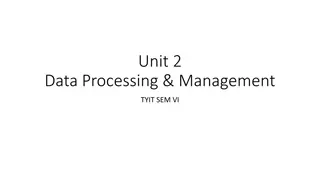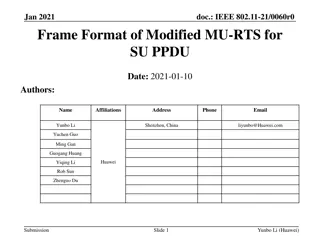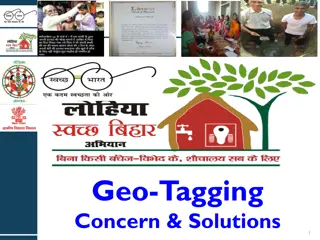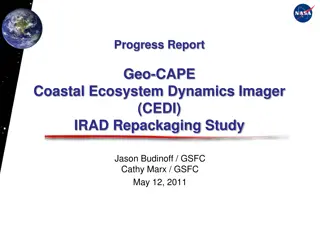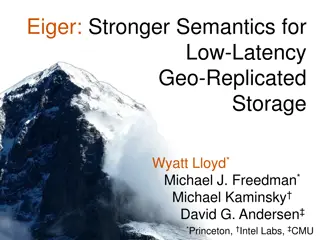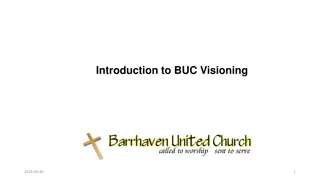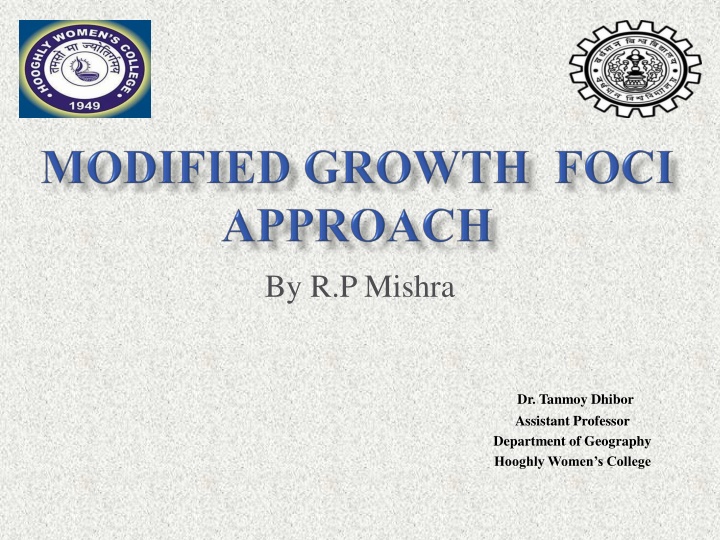
Regional Development Strategies: Growth Foci Model by R.P. Mishra
Explore R.P. Mishra's innovative Growth Foci Model, a strategic approach for regional development by identifying growth points, centers, and poles at various levels to transform socio-economic activities in rural and urban areas. Learn about the proposed new hierarchy, modified approach, and the concept's application in enhancing infrastructure and development activities within a region.
Download Presentation

Please find below an Image/Link to download the presentation.
The content on the website is provided AS IS for your information and personal use only. It may not be sold, licensed, or shared on other websites without obtaining consent from the author. If you encounter any issues during the download, it is possible that the publisher has removed the file from their server.
You are allowed to download the files provided on this website for personal or commercial use, subject to the condition that they are used lawfully. All files are the property of their respective owners.
The content on the website is provided AS IS for your information and personal use only. It may not be sold, licensed, or shared on other websites without obtaining consent from the author.
E N D
Presentation Transcript
By R.P Mishra Dr. Tanmoy Dhibor Assistant Professor Department of Geography Hooghly Women s College
INTRODUCTION The concept of growth foci is one of the indispensable strategies for the regional development, which can be applied for the transformation of socio- economic activities of rural and urban settlements. The growth foci have been identified with the help of certain indicators of administration, communication, education, health, finance, recreation, market and others. Planning for the socio-economic development for a region involves decisions regarding the appropriate location for infrastructure and development activities (Mishra 1989). Accordingly, an attempt has been to indicate the location of a new hierarchical system for purpose of regional development.
BASE OF THE PROPOSED NEW HIERARCHY 1)The identification of locational gaps in the population threshold of functions 2)Identification of the villages which are small and which do not fall under threshold population and find collective measures on the basis of their grouping.
R.P. Misras Modified Growth Foci Approach: Recognizing the importance of the growth pole theory in the process of regional planning and taking account of the above considerations, Misra extends the concept of growth pole to the concept of growth foci. This new concept of growth foci seeks to integrate the main elements of the central place theory, the growth pole theory and the spatial diffusion theory. The earlier version of the theory advocated the following four tier hierarchy of growth foci. 1. Service centers at the local level. 2. Growth points at the sub regional level 3. Growth centers at the regional level 4. Growth poles at the national level.
Five Hierarchy Services According to R.P Mishra The later formulation envisages a five tier hierarchy with: 1. the central village at the local level, 2. the service centers at the micro regional level, 3. the growth points at the sub regional level, 4. the growth centers at the regional level and 5. the growth poles at the national level.
Five Hierarchy Services of Modified Growth Foci Mode CENTRAL VILLAGES: This would be one, which can serve 6 villages and about 6000 population with marketing, services, recreational and socio- cultural interaction functions. SERVICE CENTRE: It can be a small town with a population of 5000 or so. It should be able to serve 5 central villages i.e., population of about 30000. In such a centre, even all development units can have various types of shops to meet the needs of people. GROWTH POINT: This will again serve 5 service centers thus a population of 1.5 lakhs or so. This growth point can itself have a population of about 10000 to 25000. They will have good connectivity with the district head quarters. A sub-divisional office or a tensil headquarters can fit in with this. The centre can assume agro-industrial characters and will have close links with the growth points also. It will be strong in activities relating to the production, supply of inputs, marketing, processing, service functions etc.
GROWTH CENTERS: They can be district head quarters or other big towns. They can have population ranging from 50000 to 500000. Each growth centre can look after the growth needs of 12 lakhs or more population. Growth centers should have somewhat strong industrial base also. This is possible only if the industries follow a decentralized pattern. GROWTH POLES: Capital cities and some very important district head quarters can act as growth poles. Ex: Bhopal, Indore, Bhilai, Raipur, Gwalior, Jabalpur can became growth poles. A growth poles in a small state can cover the entire state. With government support and with natural course (market mechanism) vertical and horizontal linkages can get strengthened. The role of the Government can be important as it can integrate functions over the space in shorter time period.
DECENTRALIZED CONCENTRATION The extension of the growth pole theory opens up immense possibilities for the application of this theory in promoting the process of regional and national economic growth. By ensuring a linked pattern of hierarchy of human settlements, it also successfully avoids the damages of over urbanization and of depressed areas co-existing with developed areas. The problem of providing an adequate institutional infrastructure in the rural areas is also properly looked after. Adoption of this strategy leads to what Misra calls DECENTRALIZED CONCENTRATION .
The growth pole theory has proved to be inapplicable to developing countries marked with dual economies. The growth poles transplanted in such economies have remained poles without a deeply rooted broad base. The propulsive industries located in the poles have failed to diffuse development in the hinterland. To suit the socio- economic conditions of the developing countries, the growth pole theory has been modified and the concept of system of growth foci has been evolved. In a very limited way the concept has been accepted in several developing countries as a tool to develop backward areas and regions while at the same time integrate the traditional and modern sectors of the economy into a single whole . --R.P.Misra
GROWTH FOCI AND REGIONAL DEVELOPMENT The most burning problem before the planners as well as scholars of different disciplines and administrators of the country is the development of rural economy and improvement in the socio-economic conditions of the people of the whole country. However, the basic strategy of the regional planners is to decentralize socio-economic activities and locate them in rural areas. The concept of growth foci is one of the indispensable strategies for the regional development, which can be applied for the transformation of socio-economic activities of rural and urban settlements. The growth foci have been identified with the help of certain indicators of administration, communication, education, health, finance, recreation, market and others.









